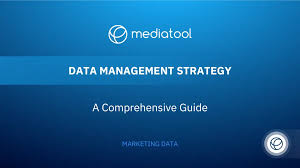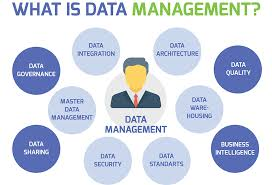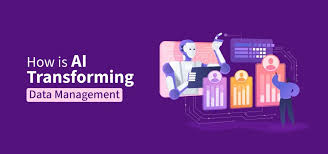Comprehensive Guide to Data Management Components 2024

In today’s digital world, data is a valuable asset for organizations. Effective data management ensures that businesses can ingest, process, store, secure, and govern their data efficiently.
This blog explores the core components of data management, their importance, and how they impact business intelligence, machine learning (ML), and decision-making.
1. What is Data Management?

Data Management is the process of collecting, processing, storing, securing, and governing data to ensure its accuracy, accessibility, and usability.
Why is Data Management Important?
✅ Enables real-time decision-making through dashboards and analytics.
✅ Ensures data security and compliance with regulations.
✅ Prevents data silos and improves data accessibility.
✅ Supports AI and ML algorithms with high-quality data.
🔹 Example: A bank uses a data management system to detect fraud by analyzing thousands of transactions in real-time.
2. The Data Management Framework
A strong data management strategy consists of multiple interconnected components:
| Component | Purpose |
|---|---|
| Data Governance | Ensures policies, compliance, and data integrity. |
| Data Architecture | Provides infrastructure for data storage and integration. |
| Metadata Management | Describes and organizes data attributes for easy searchability. |
| Data Quality | Ensures accuracy, completeness, and consistency. |
| Data Lifecycle | Manages data from creation to deletion. |
| Data Privacy | Regulates internal and external data sharing. |
| Analytics & Visualization | Extracts insights using statistical and AI-driven techniques. |
🔹 Example: Amazon uses metadata management to track product recommendations efficiently.
3. Key Components of Data Management
A. Data Processing
- Data is ingested from multiple sources (APIs, IoT devices, mobile apps, databases).
- Data is then processed and transformed using:
- Extract, Transform, Load (ETL) – Cleans and structures data before storage.
- Extract, Load, Transform (ELT) – Loads raw data into cloud storage and transforms it later.
🔹 Example: A weather forecasting system uses real-time IoT data ingestion to predict storms.
B. Data Storage
- Data storage depends on type (structured/unstructured) and purpose.
- Common storage types:
- Data Warehouses – Structured, schema-defined storage for business analytics.
- Data Lakes – Stores structured and unstructured data, supporting AI projects.
- Hybrid Storage – Uses both warehouses and lakes for flexibility.
🔹 Example: Netflix stores customer viewing patterns in a data lake for personalized recommendations.
C. Data Governance

- Ensures data quality, accessibility, and security.
- Defines roles and responsibilities for data access.
- Aligns data with business policies and legal requirements.
🔹 Example: GDPR regulations require companies to provide users with control over their personal data.
D. Data Security
- Protects data from cyber threats, breaches, and corruption.
- Uses:
- Encryption – Scrambles data to prevent unauthorized access.
- Data Masking – Hides sensitive information from unauthorized users.
- Access Controls – Restricts access based on user roles.
🔹 Example: Banks use data encryption to protect online transactions from hackers.
E. Data Platforms & Infrastructure
A robust data platform ensures high-speed processing, large storage capacity, and scalability.
| Feature | Benefit |
|---|---|
| Cloud-based storage | Elastic scalability and cost efficiency. |
| Parallel Query Processing | Faster data retrieval. |
| In-Memory Caches | Improves real-time analytics. |
| Distributed Computing | Handles massive datasets efficiently. |
🔹 Example: Google BigQuery enables real-time analysis of petabytes of data using parallel processing.
4. How Data Management Powers Business & AI

Effective data management enhances decision-making and optimizes machine learning models.
| Use Case | Impact |
|---|---|
| AI-Powered Customer Insights | Personalized recommendations (e.g., Amazon, Netflix). |
| Fraud Detection | Detects anomalies in banking transactions. |
| Predictive Maintenance | IoT-based machine failure predictions. |
| Healthcare Analytics | AI-driven medical image analysis. |
🔹 Example: Tesla collects real-time driving data to improve its self-driving AI.
5. Best Practices for Data Management
✅ Ensure data consistency – Use standardized formats across systems.
✅ Automate data pipelines – Reduce human errors and speed up processing.
✅ Monitor data security – Implement regular audits and encryption protocols.
✅ Use AI for data governance – Automate compliance checks and anomaly detection.
✅ Invest in scalable infrastructure – Use cloud-based solutions for flexibility.
Final Thoughts
Data management is critical for organizations aiming to stay competitive in a data-driven world. With proper storage, processing, governance, and security, businesses can unlock insights, power AI applications, and ensure compliance.
💡 How does your organization manage data? Let us know in the comments! 🚀